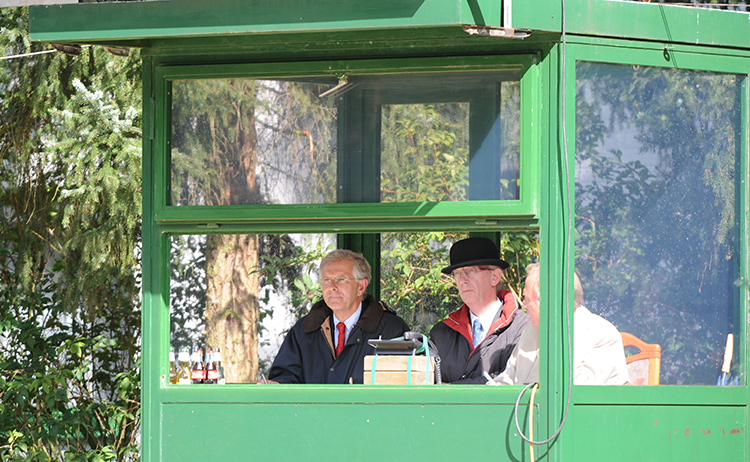Interview – Christopher Hector
Christoph Hess is always worth talking to. I find it hard to think of anyone who is quite so completely across the equestrian spectrum. A dressage judge, and much in demand commentator, an eventing judge – and a close student of the discipline, and through his son’s involvement, a keen observer of the showjumping scene. I caught up with Christoph at Aachen for this wide ranging discussion…
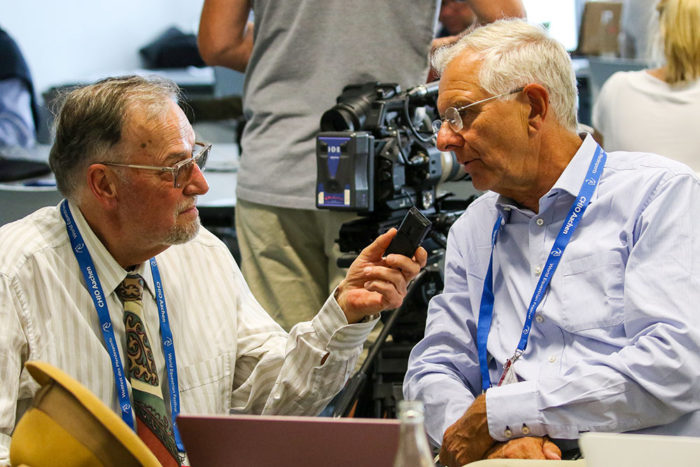
At Aachen this year we saw some really exciting eventing dressage tests…
“I think we saw some really good ones. To be honest I didn’t see all of them but when I look at the results, I think we have now good riders in all the countries, in all the different teams. The good thing is that we have one red line, which is the scale of training, and that makes me very happy that we have this standard in eventing dressage. I like very much having the eventing dressage in the main dressage arena, so we can demonstrate the difference between eventing dressage and pure dressage. Today was a good day for eventing dressage because many riders, at least twenty riders, were able to explain with their tests how good dressage looks.”
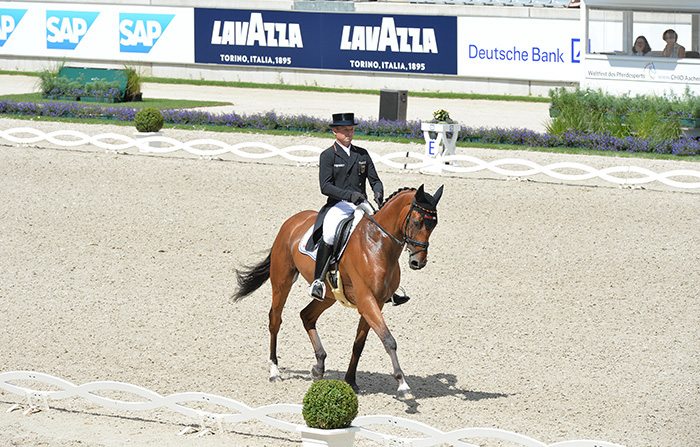
Michael Jung and Sam – 76.17% Thoroughbred!
“For me this is an example of how to train horses in general, because in many cases, these riders have very hot horses, Thoroughbred horses who are not easy to ride. They have the ability for cross country and showjumping, they are not selected for their ability at pure dressage and these riders are doing an amazing job – an amazing job! This is, for me, classical riding.”
“They are able to produce the very best out of the horse. We have sometimes pure dressage riders, and they have horses with huge movement and they have the challenge to make the movement smaller, to collect the horse for pirouettes, or zig zag half passes, but the eventing riders often have to develop the paces of the horses, to make them bigger – a longer moment of suspension, more swinging, more coming from behind through the body. This is from the classical point of view, the right way of riding, not making a big canter small, no – to make smaller gaits big, and this is what you could see today, with lovely horses, well balanced, obedient, supple, relaxed. I was very very pleased with many of these riders.”
Have we reached the stage where we have to make the degree of difficulty in the eventing dressage test, more difficult?
“Okay I am sure in the next years we will get new tests. I think when we got the flying change, this was a huge step forward. The tests are important, no doubt, but more important for me, is how the judges judge. They have to give really high marks for good riding, and really low marks for bad riding…”
And they did that today…
“I didn’t look too much to the marks, but I think this was the vision that they had. That’s the first thing, and now the second thing is that all riders and trainers have the same idea. When we got the new rule that we don’t have a coefficient in the dressage, and this was a mistake from today’s point of view, I expected that dressage would not be as important as it has been before. But this was a mistake in my thinking – now I think dressage is as important as it was before. Maybe at the end of the day, the results are a bit closer together but when you have a clear round cross country, when you have a clear round showjumping, even if you are just .01 in front of the second rider, you are still the winner.”
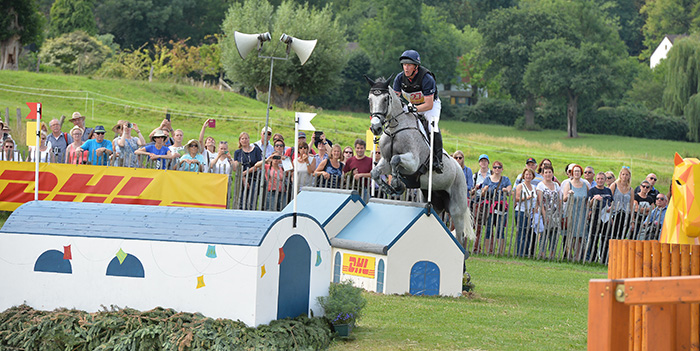
Ballaghmore Class – just one and a bit seconds too slow!
“We had this in Badminton this year, Ollie Townend lost his win because he was one second too slow on the cross country, and less than one second too slow in the showjumping. He said to me, ‘Christoph, because of two strides, one stride cross country, one stride showjumping, I lost!’ It’s unbelievable when you think about it, but it is very exciting.”
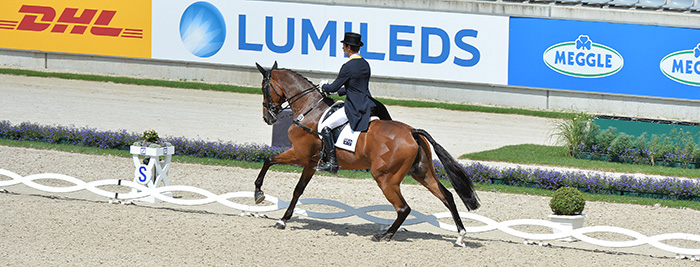
Christopher Burton and Nobilis – leading the Australian dressage charge….
“I know the Aussies always say, we win eventing competitions with dressage and we lose eventing competitions with showjumping. Therefore it is important to have good tests, and most of the teams have really good trainers, especially for dressage. Sometimes they invite judges who train as well, to give the riders some idea of what to concentrate on when they are competing. There is a red line, from all different points of view, from all countries. Once there used to be a Dutch way of riding, a German way, a British way, a Scandinavian way – no! There is only one red line, and this I think is important, now we have good riding in the eventing dressage and good riding in the pure dressage.”
Are you happy with the way cross-country is going at the moment?
“Cross country has to be difficult, no doubt, but it is good if it is not too technical. If it is too technical and we have too many narrow fences it is not good, it shouldn’t be too tricky. It is still cross-country, and I think the technical part should be more the showjumping part. I know when I was on the eventing committee with Wayne Roycroft, he always said, we need a true showjumping with distances like a normal showjumping course – it should look like a Grand Prix, smaller but with similar ideas. This I like very much. And the cross-country should be countryside, it should not be too artificial. It should be a little that we are close to the nature of the horse, for me that is very important.”
Are you worried about the format in Tokyo with no discard score?
“I find this difficult to understand, and I think it will be very difficult for the press to explain it to the spectators…”
I’m more worried about the horses, we are going to have some very inexperienced riders and there is going to be a huge pressure to get the horse to the finishing line to keep a team in the competition, so the rider who might decide his horse has had enough and it is better to walk home, will keep pushing on, and that’s when bad accidents happen…
“It worries me too. I have judged Olympic Games and World Championships, and this for me, is the biggest challenge for the course designer – in this class there will be winners of Badminton, winners of the big five stars, but on the other hand you have riders that are just on the level of the new four-star, riders who have qualified in easy classes, and this is a problem. If something bad happens at a normal eventing competition, it is bad, but if something happens at an Olympic Games, where we have thousands of press, it is a nightmare. It can be the end of the equestrian sport in the Olympic Games because we have so many new sports that want to come into the Olympic family – I’m really terrified.”
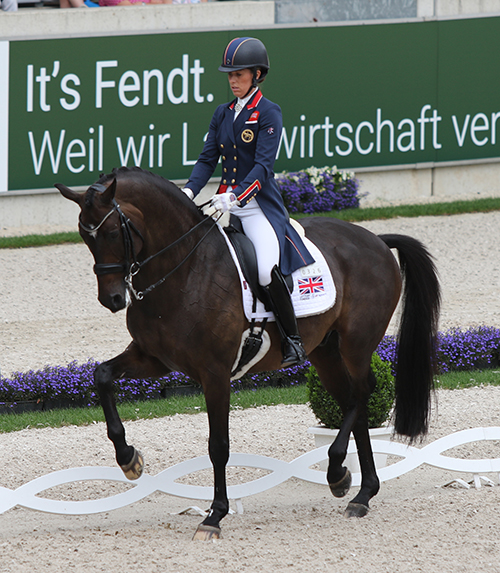
Charlotte and Erhlentanz – a real highlight
Now you can put your dressage dressage hat on – looking at the 4 and 5-star Dressage Grand Prix here at Aachen, are we going in the right direction?
“I think so. In total we saw almost sixty horses, it is not possible to always see good pictures, this is the first thing. Sometimes we see riders who are not ready, and their horses are not ready, but the good ones, it’s amazing, the best five or six in the Grand Prix, that was amazing.”
“For me, Charlotte Dujardin was the highlight, maybe some other riders got more marks, maybe because their horses had a little bit more trot, but the way she is riding, that is the way I want to see it. That’s for me harmony, cooperation, smooth, relaxed through the body, good elasticity, balance, mental and physical balance, for me there are so many good points. For me, as a rider, she was the highlight of the Grand Prix.”
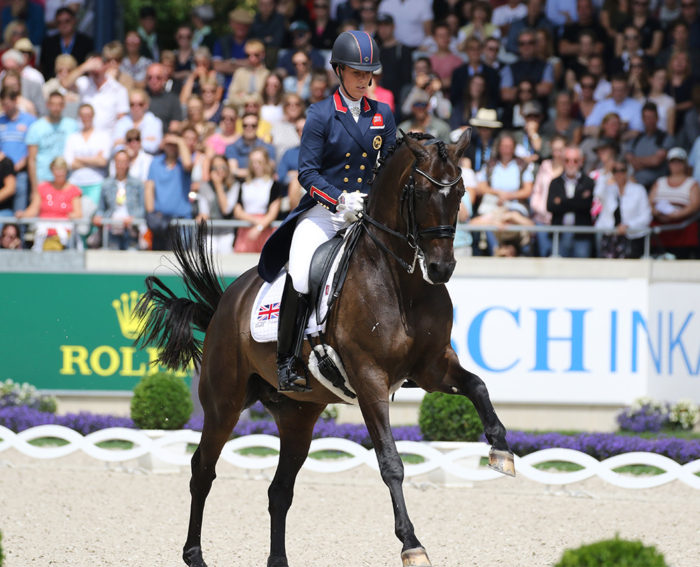
I find it a worrying thing about dressage competition, that whereas in showjumping if you have a class of 60, then 55 can win it, but in dressage, out of the 60 there are only five who can win… And the difference between the very top and the rest seems to be getting wider? Even at the WEG, on the first day it is not so exciting because you are waiting for the top ones to come on the second day…
“Maybe in the WEG you are right, but here at Aachen, I think we had we had 22, 23 horses with more than 70%, and more than 70%, that is a new league. And when I look to the teams, the Danish team is very, very strong – good riding, all their riders are excellent, the Swedish are good, the Germans are good, England, especially with one rider, are good. I think yesterday in the Grand Prix we had at least ten horse and rider combinations, and I say, wow! These were horses and riders who can win anywhere in the world, but at Aachen only one can win, at Aachen it is the top of the mountain.”
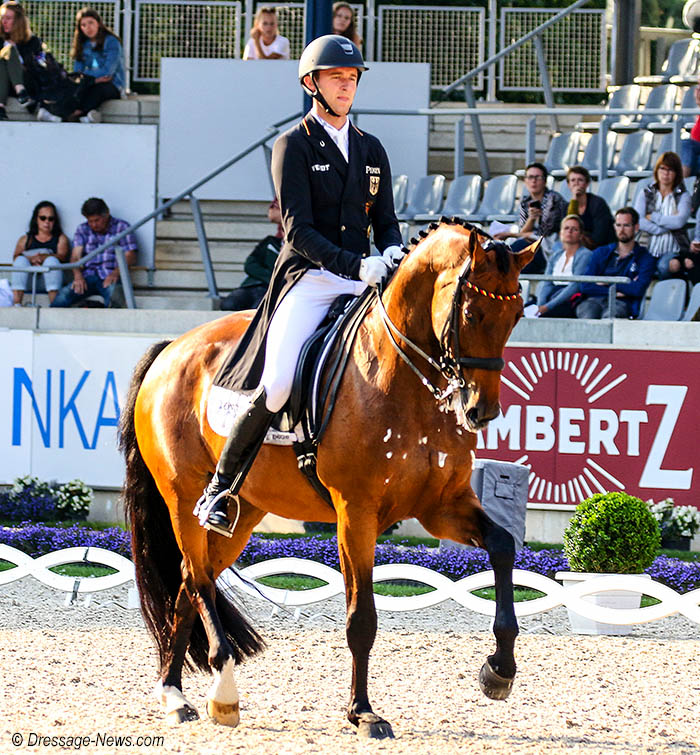
Cosmo – would he have won the five star?
If Cosmo had been in the five star class, what do you think would have been the result?
“I think it would have been very exciting, I think his result in the four-star was higher than Isabell’s result with Bella Rose in the five-star, Bella Rose had a mistake, Cosmo had no mistakes, it is a very exciting situation.”
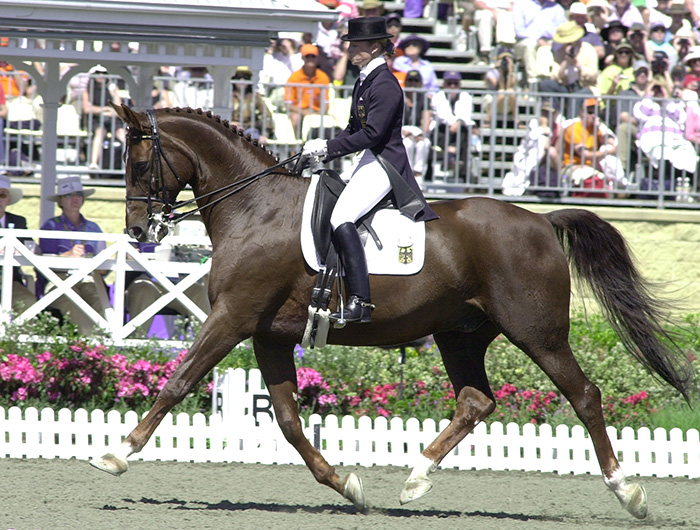
Gigolo, and
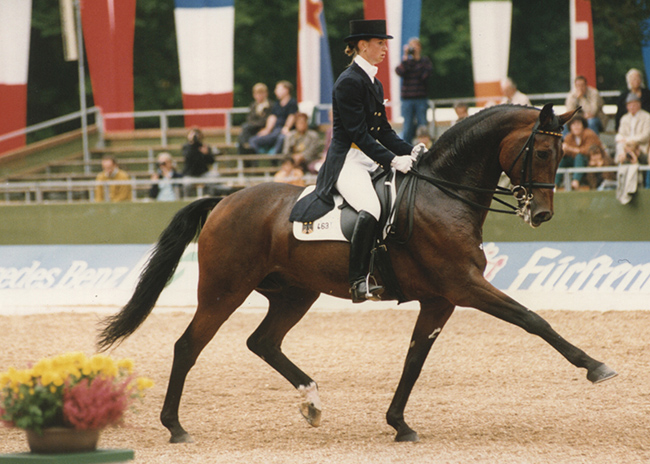
Rembrandt – great rivalries are good for the sport
“Many years ago I judged the German Championships when we had Rembrandt and Gigolo, and at the end on the computer they both had the same score, but I gave Nicole a ten for her riding, and she went on to take the gold medal. At the end of the day, this is a little bit subjective – objectively both Bella Rose and Cosmo are very very close together, they are not similar, they have quite different highlights, but then from a judge’s point of view, when you close your eyes and say, okay, who was better today? Maybe someone will say, Cosmo was better, and I can agree.”
But it is wonderful for the sport when we get these great rivalries at the top…
“Absolutely, that is exactly the point, it makes dressage exciting, and it is really a challenge for the judges. It’s a sport for the judges as well, it is not just sitting there, have a cup of coffee and give some marks, no for the judge it is very challenging, it requires very good concentration, very objective, you have to have a clear mind and a clear line from the last rider to the first rider. This is not easy because you have a lot of pressure as well, for me, good judging at the highest level is similar to the sporting challenge the rider has…”
